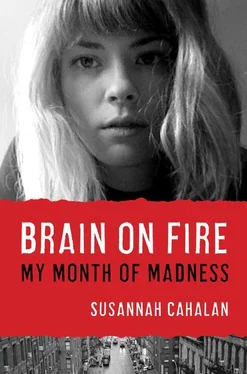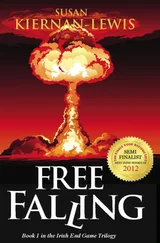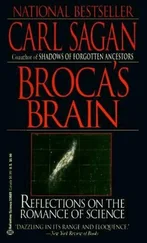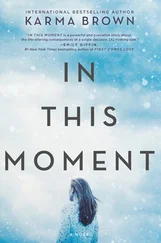To Paul McPolin, my straight-shooting Post editor, you are, as I said, a brilliant editor, and your work and generosity show in these pages. To my Post neighbor Maureen Callahan, who spent many nights listening to me babble over martinis: your insights show on these pages as well. And to Angela Montefinise, who told me the book was “great” when it was far from it, who brought me a cheeseburger in the hospital, who rescued my blue-haired stray, Dusty: I am forever in your debt. And thank you to the extraordinary Julie Stapen not only for bringing some needed levity (with her now infamous “poop” picture) but also for spending two hours patiently shooting me in search of the perfect author photo.
Thank you to Katie Strauss for the stuffed rat, Jennifer Arms for the pumpernickel bagel, Lindsey Derrington for visiting me all the way from St. Louis, Colleen Gutwein for those gorgeous pictures of Cambodia, Mackenzie Dawson for her Sartre quote, and Ginger Adams Otis and Zach Haberman for taking care of Dusty when I wasn’t able to.
To the New York Post, and especially the Sunday staff, which has been so supportive during my illness and throughout the writing of this book. The Post ’s cast of characters are among my closest friends. Thank you to the following who have helped in one way or another with the writing of this book: Jim Fanelli, Hasani Gittens, Sue Edelman, Liz Pressman, Isabel Vincent, Rob Walsh, and Kirsten Fleming. Thanks to Steve Lynch, who edited the article “My Mysterious Lost Month of Madness,” on which this book is based, and to my first editor, Lauren Ramsby, who taught me the value of asking that extra “why.”
To the friends and family who offered up their valued perspectives: the Goldmans, the Fasanos, Rosemarie Terenzio, Bryan Cirelli, Jay Turon, Sarah Nurre, Frank Fenimore, Kelsey Kiefer, Calle Gartside, David Bernard, Kristy Schwarzman, Beth Starker, and Jeff Vines. And thank you to Preston Browning, who offered me a place to write at his charming Wellspring House, which has become my second home.
And, finally, thank you to the “purple lady,” whose name I still don’t know.
Illustration by Morgan Schweitzer: pages 1, 42, 73, 117, 173, 235, 251
Medical record: pages 75, 90, 92, 119
Illustration by Morgan Schweitzer and Susannah Cahalan: page 132
Images from Dr. Josep Dalmau, University of Pennsylvania, Department of Neurology: page 148
Images from Dr. Souhel Najjar, NYU Medical Center, Departments of Neurology and Neuropathology: page 219

AUTHOR PHOTO BY JULIE STAPEN
Susannah Cahalan began her investigative reporting career at the New York Post when she took an internship in her senior year of high school. She has now been there for ten years. Her work has also been featured in the New York Times and the Czech Business Weekly, where she worked when she studied abroad during her junior year of college. She was the recipient of the Silurian Award of Excellence in Journalism for Feature Writing for the article “My Mysterious Lost Month of Madness,” on which this book is based. She lives in Jersey City, New Jersey.
MEET THE AUTHORS, WATCH VIDEOS AND MORE AT
SimonandSchuster.com
• THE SOURCE FOR READING GROUPS •
JACKET PHOTOS: (TOP) COURTESY OF THE AUTHOR;
(BOTTOM) KEVIN TRAGESER/IMAGE BANK/GETTY
COPYRIGHT © 2012 SIMON & SCHUSTER
authors.simonandschuster.com/Susannah-Cahalan
NOTES
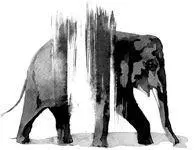
1 those suffering from parasitosis: Nancy C. Hinkle, “Delusory Parasitosis,” American Entomologist 46, no. 1 (2000): 17–25, http://www.entuga.edu/pubs/delusory.pdf(accessed August 2, 2011).
2 releasing millions of virus particles: Vincent Racaniello, “Virology 101,” Virology Blog: About Viruses and Diseases, http://www.virology.ws/virology-101/(accessed March 1, 2011). Robert Kulwich, “Flu Attack! How the Virus Invades Your Body,” NPR.org [blog], October 23, 2009 (accessed March 1, 2011).
3 “I used to try to forget about you”: Robert D. Siegel, The Wrestler, directed by Darren Aronofsky, Fox Searchlight, 2008.
CHAPTER 7: ON THE ROAD AGAIN
4 “That’s nice to have at seven in the morning”: “Basking in Basque Country,” Spain… on the Road Again, PBS, New York, original broadcast date October 18, 2008.
CHAPTER 8: OUT-OF-BODY EXPERIENCE
5 complex partial seizures: Epilepsy Foundation, “Temporal Lobe Epilepsy,” Epilepsyfoundation.org, http://www.epilepsyfoundation.org/aboutepilepsy/syndromes/temporallobeepilepsy.cfm(accessed March 1, 2011). Temkin Owsei, The Falling Sickness: A History of Epilepsy from the Greeks to the Beginnings of Modern Neurology (Baltimore: Johns Hopkins University Press, 1971).
6 range from a “Christmas morning”: Alice W. Flaherty, The Midnight Disease: The Drive to Write, Writer’s Block and the Creative Brain (New York: Houghton Mifflin, 2004), 27.
7 religious experiences: Akira Ogata and Taihei Miyakawa, “Religious Experience in Epileptic Patients with Focus on Ictal-Related Episodes,” Psychiatry and Clinical Neurosciences 52 (1998): 321–325, http://onlinelibrary.wiley.com/doi/10.1046/j.1440–1819.1998.00397.x/pdf.
8 A small subset of those with temporal lobe epilepsy: Shahar Arzy, Gregor Thut, Christine Mohr, Christoph M. Michel, and Olaf Blanke, “Neural Basis of Embodiment: Distinct Contributions of Temporoparietal Junction and Extrastriate Body Area,” Journal of Neuroscience 26 (2006): 8074–8081.
CHAPTER 9: A TOUCH OF MADNESS
9 best places to live in America by Money magazine: CNN Money, “Best Places to Live: 2005,” Money.CNN.com, http://money.cnn.com/magazines/moneymag/bplive/2005/snapshots/30683.html(accessed Thursday, April 12, 2012).
10 “a brain disorder that causes unusual shifts in moods”: National Institutes of Health, “Bipolar Disorder,” NIH.gov, http://www.nimh.nih.gov/health/publications/bipolar-disorder/nimh-bipolar-adults.pdf(accessed March 14, 2009).
11 Jim Carrey, Winston Churchill, Mark Twain, Vivien Leigh, Ludwig van Beethoven, Tim Burton: Bipolar Disorder Today, “Famous People with Bipolar Disorder,” Mental-Health-Today.com, http://www.mental-health-today.com/bp/famous_people.htm(accessed March 14, 2009).
CHAPTER 15: THE CAPGRAS DELUSION
12 her husband had become a “double”: Orin Devinsky, “Delusional Misidentifications and Duplications,” Neurology 72 (2009): 80–87.
13 revealed that Capgras delusions: Jad Abumrad and Robert Krulwich, “Seeing Imposters: When Loved Ones Suddenly Aren’t,” NPR, March 30, 2010, http://www.npr.org/templates/story/story.php?storyId=124745692(accessed May 4, 2011). V. S. Ramachandran and Sandra Blakeslee, Phantoms in the Brain: Probing the Mysteries of the Human Mind (New York: Morrow, 1998), 161–171.
CHAPTER 16: POSTICTAL FURY
14 twelve hours or as long as three months: Orin Devinsky, “Postictal Psychosis: Common, Dangerous, and Treatable,” Epilepsy Currents, February 26, 2008, 31–34. Kenneth Alper et al., “Premorbid Psychiatric Risk Factors for Postictal Psychosis,” Journal of Neuropsychiatry and Clinical Neuroscience 13 (2001): 492–499. Akira Ogata and Taihei Miyakawa, “Religious Experience in Epileptic Patients with Focus on Ictal-Related Episodes,” Psychiatry and Clinical Neuroscience 52 (1998): 321–325.
Читать дальше
